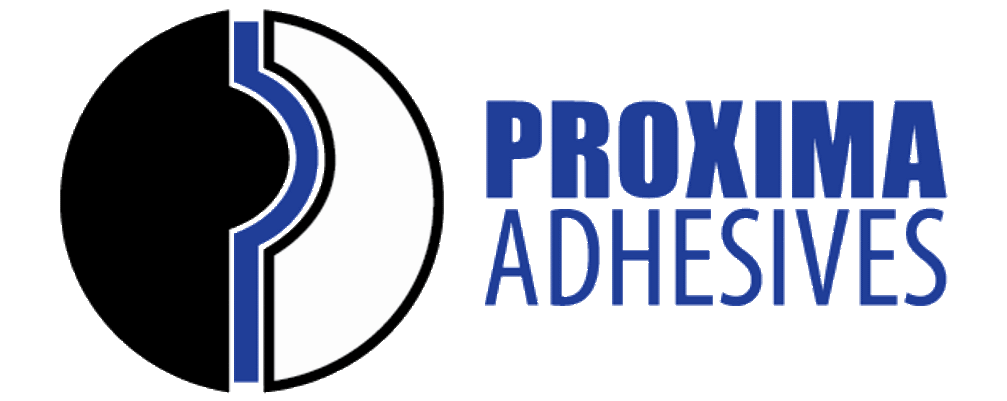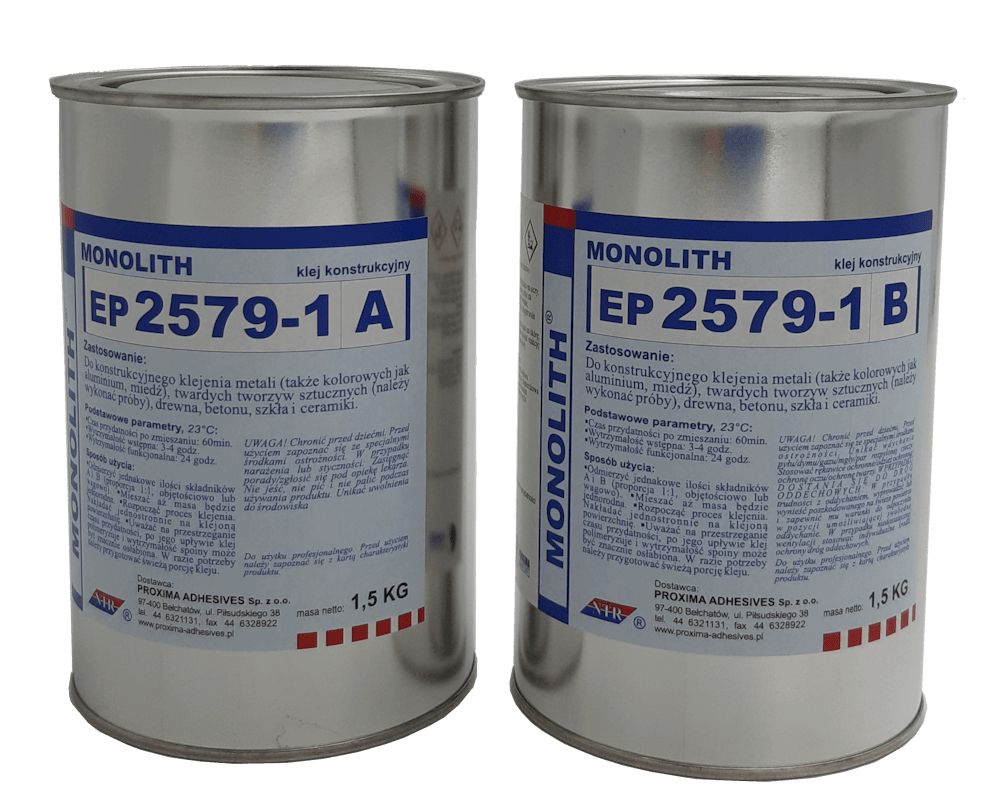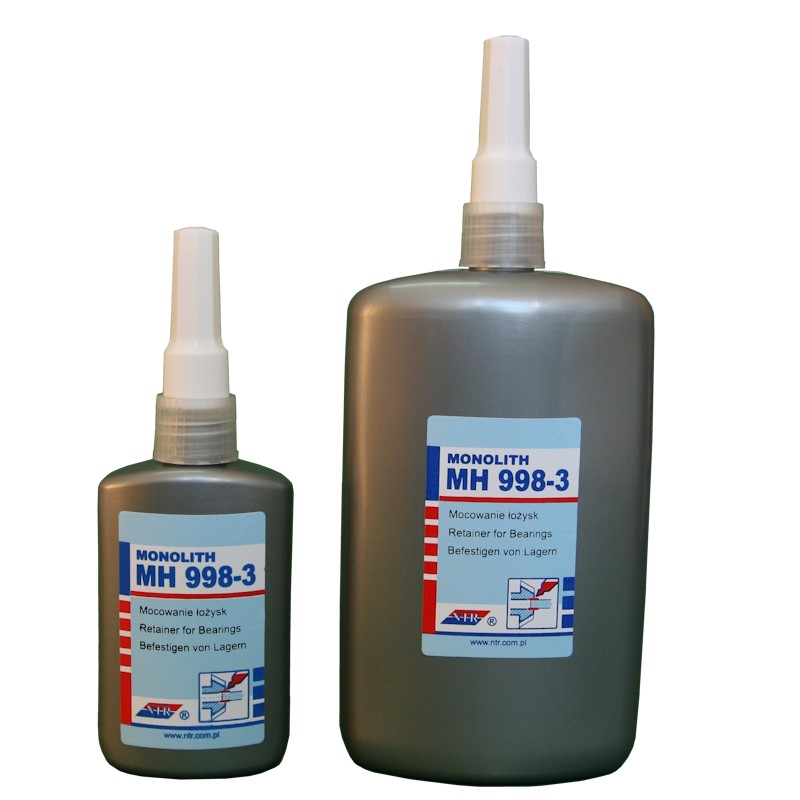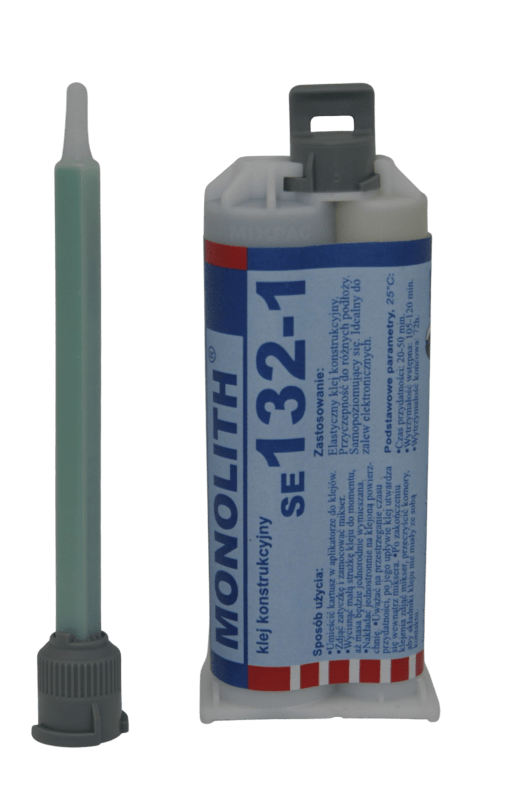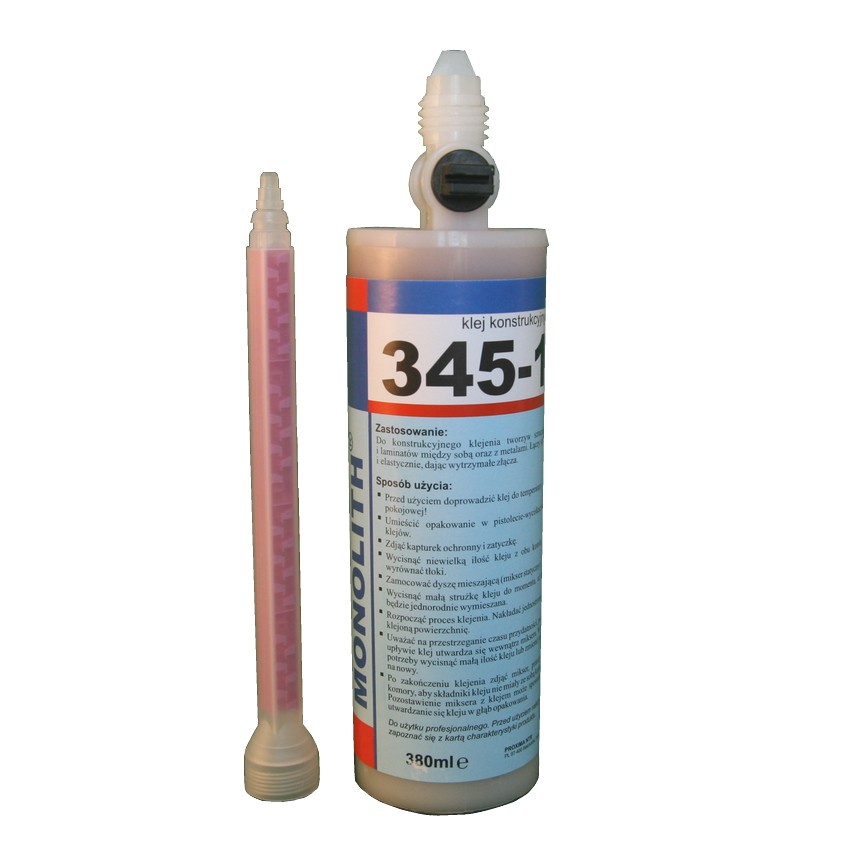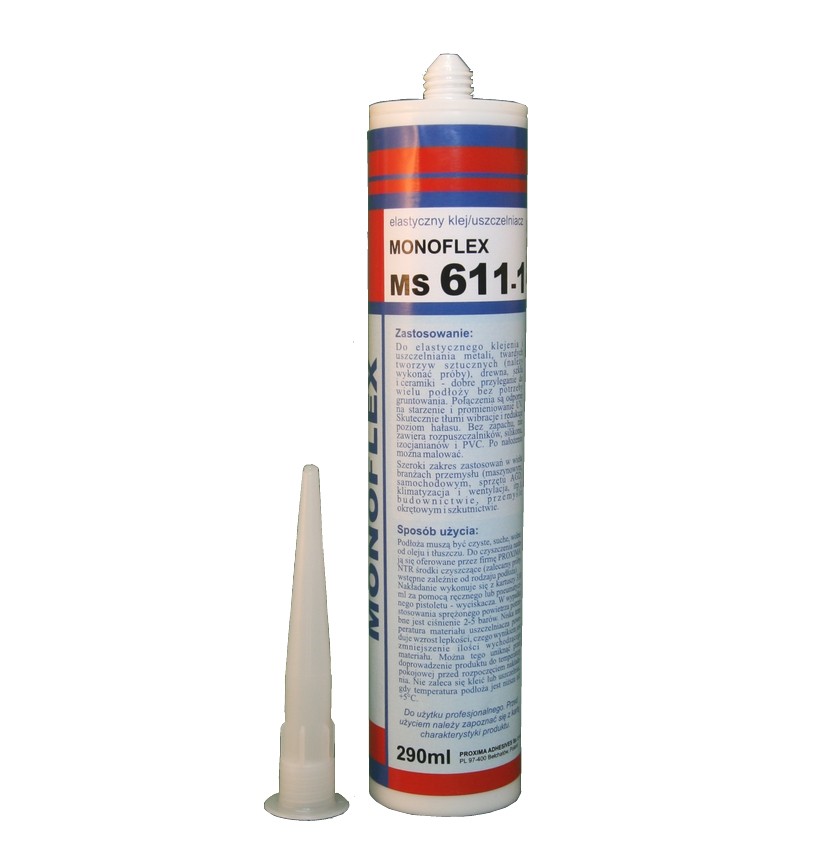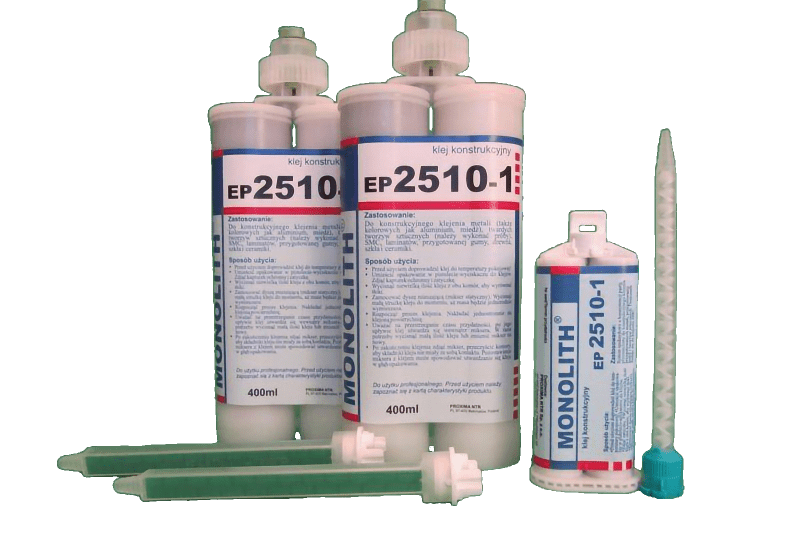Written: Aleksandra Lewandowska, Sławomir Chorek
Metal bonding in the industrial sector
Bonding is not a fundamental method of joining metals. It is still a developing field. There are more popular methods using traditional mechanical techniques. However, there are times when it is worthwhile, or there is no other choice, and joining a material using a chemical binder is the method of choice. So when is it worth using this method?
When are we going to glue?
It is certainly not a good method for joining thick components. Adhesive bonding is worth considering when the resulting structure is required to have high stiffness combined with low weight. Such requirements are found in the transport structures industry. The first industry to use this technology was the aerospace industry. Later it was used in isothermal bodies, buses, cars and containers. Another reason is when one component is one or two rows smaller than the others. Adhesives are also used to bond metals to plastics made from another raw material – glass or plastic.
However, before proceeding, we should remember that we need to answer some important questions in order to have a good idea of the technological possibilities of making a glued joint. An indication for the use of adhesives can be the disproportion in the dimensions of the elements to be joined, which precludes the use of traditional joining methods. Sometimes it is the physical conditions that determine the choice of a chemical bonding agent that is indifferent to these conditions. Other reasons are safety considerations, as in the case of the replacement of rusted supports for the sun visor on the gas tank at the EC III power plant in Lodz. It is interesting to note that Monolith® EP 2579-1 adhesive was used in this case.
The advantages
No other technology gives us results like bonding. By joining metals with adhesives, there is no bimetallic corrosion or thermal deformation, and there is also vibration damping. Another advantage is that the strength of the materials being joined is fully utilised. The bonding process does not create stress, i.e. it does not weaken the parts being joined, as is the case with welding, for example. It also preserves the surface of the material, as there is no need to drill holes or screw or rivet. Another advantage is that adhesives seal the joints themselves, eliminating the need for additional sealants. Bonding makes it possible to join parts of different thicknesses. It is the only technology that allows stainless steel sheets to be joined without holes or overlaps and without discolouration.
A major advantage, especially in industrial bonding, is the much lower skill level required of the workers. Traditional mechanical joining processes often require special qualifications acquired through courses or schooling. With adhesive bonding, virtually any worker familiar with the technology can perform the task.
Bonding vs. other techniques
A similar method to bonding is soldering, but bonding has a fundamental advantage over soldering. It is a more versatile method and can be used with more materials. Soldering with soft solder produces a joint that is only slightly stronger than a bonded joint.
Welding has significant disadvantages. It introduces stresses that require additional thermal methods to remove, adding cost. In addition, components with very small cross-sections are subject to permanent deformation. There are materials that cannot be welded, such as steel and aluminium. Welding destroys the galvanic coating and permanently discolours the stainless steel sheet. This method of joining metals often needs to be accompanied by additional factors such as inert gas shielding or the use of special expensive electrodes.
Bolted joints are another common but expensive method. However, these joints are leaky and prone to bimetallic corrosion. Welding is used to join sheets in a small thickness range. However, it is difficult to achieve an airtight joint and spot welding causes stress concentrations. Press joints with small component wall thicknesses do not allow sufficient clamping forces to be achieved and the assembled components require additional machining, increasing the cost of this method.
Adhesive selection factors
The following factors should be considered when choosing the right adhesive
– The nature of the surfaces to be bonded – tinned or non-tinned,
– The exposure to corrosion,
– The temperature at which the joint will operate,
– Ease of assembly and mechanical properties
– The cost of the bonding process.
Adhesive types
A number of studies have been carried out to find the adhesives with the best bonding properties for specific materials. Adhesive groups with different chemical bases, dedicated to specific tasks, have been identified. Here are the basic groups of adhesives:
– Anaerobic adhesives – These are based on methacrylate resins. The metal acts as a catalyst. When there is no air, and therefore no oxygen, in contact between two surfaces, at least one of which must be metal, the adhesive changes from a liquid to a hard, flexible solid. Where is this type of adhesive used? It is useful for securing threaded connections (disassembly by heating to a temperature higher than the maximum for the adhesive), seating bearings, gears, bushes, hubs, or sealing the mating surfaces of gear housings and covers. The cure time of anaerobic adhesives is influenced by the activity of the material. Active materials include copper, mild steels, unhardened carbon steels and cast iron. Inactive materials include high alloy steels, hardened aluminium and galvanised surfaces.
– Cyanoacrylate Adhesives – These are one-component substances manufactured on the basis of methyl, ethyl and alkoxy. Ethyl based adhesives are the most commonly used. Polymerisation occurs due to the catalytic properties of moisture in the air. This type of adhesive has a very short reaction time. With these adhesives we can achieve a strong bond on steel or aluminium, but also on plastics and various combinations of these materials. Cyanoacrylate Adhesives have a wide range of applications as they are very fast and strong. Due to these properties, they are mainly used for joining small parts. They are used in the manufacture of surgical instruments and in automated applications.
– Epoxy Adhesives – These are two-component substances. They are manufactured on the basis of polymeric epoxy resins. They are used for structural bonding of: carbon steels, alloy steels, stainless steels, aluminium, non-ferrous metals, most hard plastics, ceramics, glass, concrete, minerals and wood, and for bonding these materials to metals. They are ideal for bonding small rigid components.
– Methacrylate Adhesives – These are chemically cured two-part adhesives based on methyl methacrylate. They do not require thorough surface preparation and reduce build-up fields. The primary use of this type of adhesive is to bond plastics, but they are also used to bond plastics to metal or metal to metal. In industry they are used in vehicles, wind towers or in metal and plastic structures.
– Silicones – Synthetic organosilicon polymers with a siloxane structure. They are divided into acetic silicones, methoxy silicones, alcohol silicones and addition silicones. Their main advantage is high flexibility. Acetic silicones are best suited for bonding metals. Adhesive silicones are also used to bond metals, but also glass and ceramics. Their main advantage is that they cure throughout their volume without shrinking. This property allows them to be used as assembly adhesives and sealants. They are used where food contact approval is required.
– MS polymers (MS silanes) – These are polymers modified with silanes. They are an intermediate between polyurethanes and silicones. They are highly flexible and have high bond strength. They have good adhesion to metals and many other substrates. Advantages include UV resistance, better adhesion than polyurethane with an activator and cohesion, which can be selected according to circumstances. Thanks to these properties, the adhesives in this group are used for bonding materials with different coefficients of thermal expansion, in environments with constant humidity or in joints subject to vibration. They are also used to bond large components consisting of thin shells supported by stiffeners.
How do you bond metals?
As with other materials, it is important to start with good surface preparation. If a component is large or its mass is critical, various etching and coating processes are used, such as cataphoresis. These are complicated processes that require chemical baths and special health and safety precautions. A simpler approach is to perform the degreasing or primer application itself, which is designed to bind contaminants. The next step is to apply the adhesive. There are several techniques. The key is to apply and adhere to the other surface in such a way that there is no air between the two parts. The glue must be removed from the containers in the correct way. Rare glue in cartridge tubes or bottles is designed to displace air and flow around the joint by itself. This process occurs, for example, in threaded joints where adhesives with uniform capillary properties are used.
An air bubble is always a source of discontinuity in the joint and can cause delamination. Therefore, in structural joints, the problem of air bubbles in the joint is a major issue to be addressed. In these cases, it is not only the application of the adhesive that can be a problem, but also the application of the surface. Structural or process pockets cannot be used as they can trap air which will displace the adhesive to the outside.
What about using a thixotropic adhesive? This is a dense adhesive that contains fillers to increase strength, resist peeling and resist vibration. Such high strength adhesives are subject to increased notching, which makes them similar to metals. Therefore, the adhesive must be applied in a continuous stream without air bubbles. For this purpose, industrial packaging methods are used and the adhesive is applied directly from the packaging. For smaller joints, special applicators and cartridges are used (Figure 6), and for large parts, pumps are used to deliver the adhesive through hoses directly from drums or buckets.
The next step is to join the elements together. Here we make the very common mistake of pressing the elements together. In most cases we should not do this. They just need to be put together and fixed in place. Unless, of course, they deform, bounce or fall off under their own weight, in which case it is necessary to secure their position until the desired weld is achieved. But again, this is not a matter of pressing. Spacers, metal or rubber washers are used to ensure the correct thickness of the adhesive layer. A good example is responsible structural bonding, where adhesives with special glass beads are used to ensure the correct layer thickness.
With traditional mechanical methods of joining metals, such as welding or brazing, once the parts are joined, further processing of the product can begin. This is not the case with bonding, which can be a disadvantage. We have to set the bonded parts aside for a period of time while the weld forms. Technologists are working to minimise this time, which is so valuable in any manufacturing process.
Reduced adhesive setting time
Even in the production of adhesives, attempts are made to develop technology to achieve the shortest possible time for the bond to form. Adhesives with a booster, fast two-component adhesives, no-mix systems or activators are produced. Time can also be gained by optimising the adhesive application method. It is up to manufacturers and suppliers of dispensing equipment to optimise the process. The aim is to apply the fast setting adhesive as quickly and efficiently as possible. Pump performance is increasing, as is the accuracy of component mixing. Automation of the application and component assembly process is increasing. Closed loops are being created. In each of the next five years, the cost of maintaining adhesive processes will almost halve. As a result, smaller and smaller manufacturers can afford to use this method.
Summary
There are many ways to join metals. The key is to choose the right technology to achieve the desired effect. In modern industry, adhesives play an increasingly important role in joining metals to various materials. Hence the variety of types. They have made it possible to join materials that previously could not be joined and have greatly expanded the technological possibilities of modern industry. Bonding is often an irreplaceable method. In the future, when the barrier of intermolecular bonding is broken, traditional mechanical technologies will probably be history.
